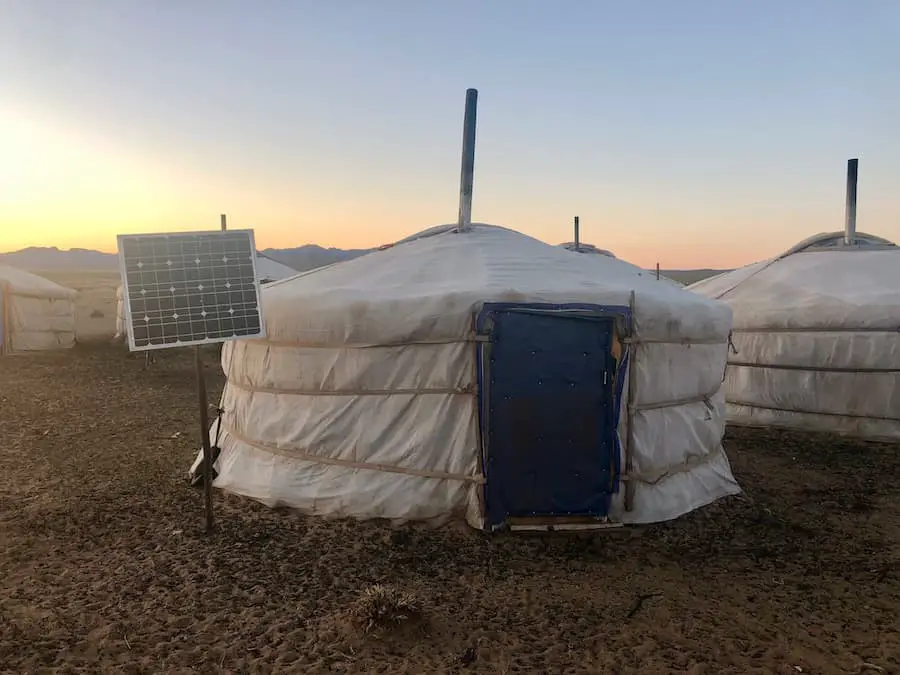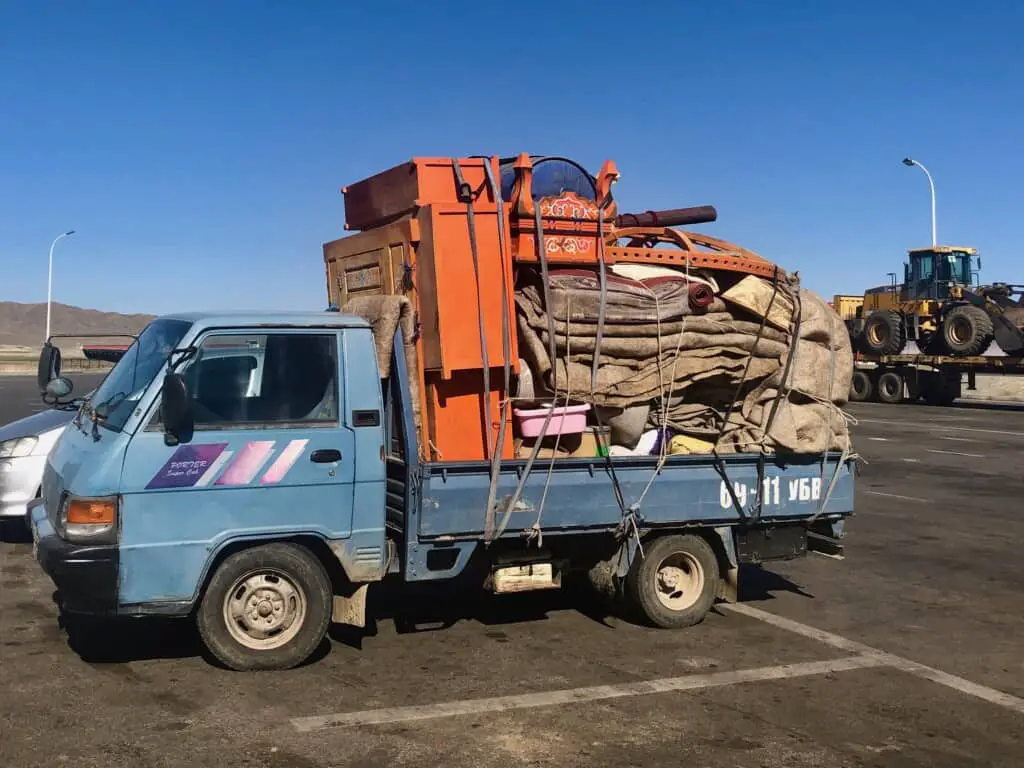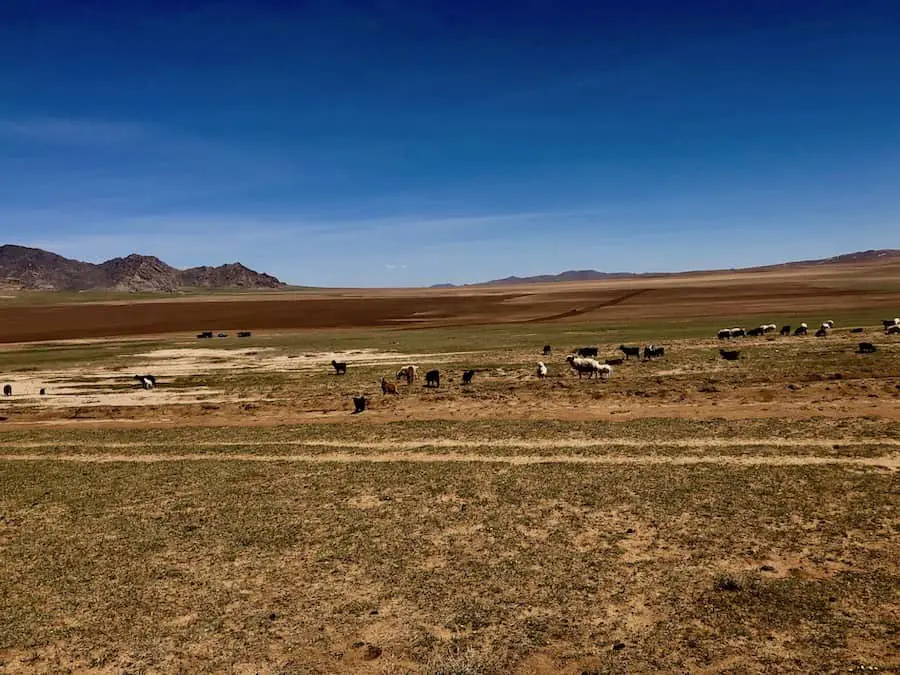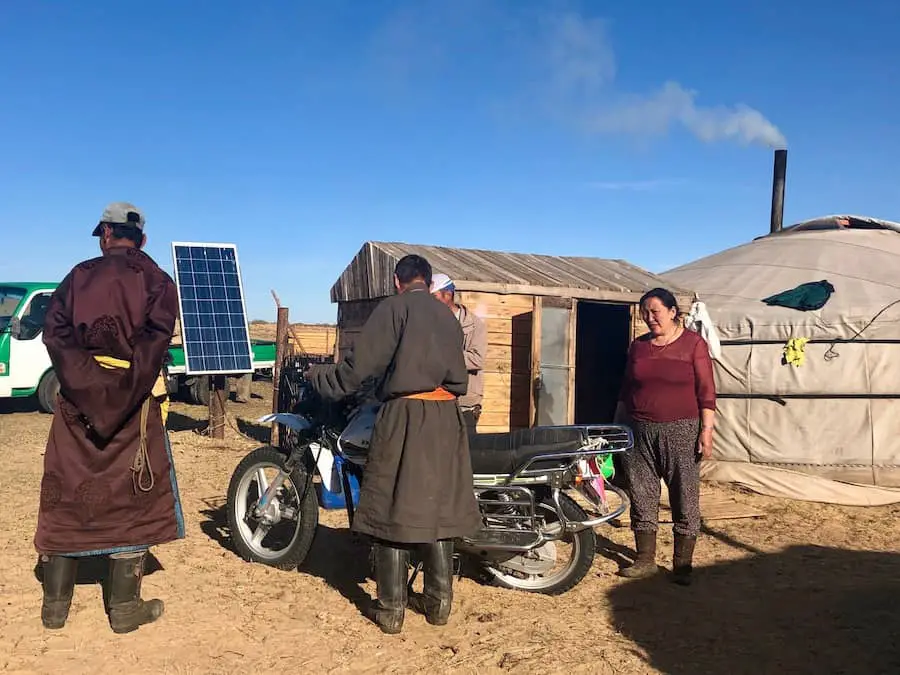During my time in Mongolia, I sincerely appreciated the country’s rich nomadic heritage, especially the experience of visiting and staying with the nomadic herders. Living in traditional gers (also known as yurts), these herders practice a way of life that has been a cornerstone of Mongolian culture for centuries.
Mongolia, an ancient land with a tapestry of traditions, is mainly known for its nomadic lifestyle. The resilient herders, central to this culture, sustain themselves by tending to diverse herds, including goats, sheep, horses, camels, and yaks. These herds roam across the vast Mongolian grasslands, a testament to a life harmonized with nature. The Mongol herders, emblematic of Mongolia’s nomadic culture, continue to uphold their unique lifestyle amidst the challenges of increasing urbanization.
Table of Contents
- What Are The Nomadic Herders In Mongolia?
- 6 Lessons In Grit and Perseverance I Learned From Nomadic Herders in Mongolia
- Related Information About Mongolia and Nomadic Herders
- Related Questions

What Are The Nomadic Herders In Mongolia?
Mongolia is an ancient nation full of traditional nomadic lifestyles, populated by hardy herders and their hearty flocks of goats, sheep, horses, camels, and yaks. For centuries, these nomadic people have made their living by herding animals across the vast grasslands of the Mongolian.
They are Mongols—nomadic herders who still hold a strong cultural presence in Mongolia today, despite pressure from rapid urbanization changing their way of life dramatically. The nomadic herders in Mongolia will roam in small tribal or extended family groups, and they have essentially no permanent home base.
They live in Gers or Yurts so that they can move their camp about three or four times a year to get better grazing land for their herders. As their herds need water and grassland to survive, they will move them where there is adequate water and grass for grazing.

But they cannot transport a lot when they move from camp to camp, so they are constantly setting up new centers, water sources, and solar systems for their electricity.
Many of these herders will make their entire livelihood off their animals. They sell their animals for meat and fur, then made into yarns for cashmere and wool.
Some nomadic herders are also in the tourism industry as they have gers that tourists can stay in, or they give the tourists camel or horse rides.

6 Lessons In Grit and Perseverance I Learned From Nomadic Herders in Mongolia
We can all learn to have some grit in our lives. Grit and perseverance are some of those qualities that help us see our way through the important things or times in our lives and then find a way to work our way through these difficult times.
In Mongolia, Nomadic herders spend their lives in very harsh conditions. They live in Gers (Yurts) and travel several times a year with their herds. Life is harsh for the Mongolian nomadic herders; the weather is extreme, yet they continue to live.
The Mongolian nomadic herders can teach us some essential lessons in life, such as that bad things can happen in our lives, but we can choose not to be bitter. We can also be grateful for all our blessings while, at the same time, we can get up and get to work.
If a Loss Happens in Life, Get Up And Keep Working
Recently I stayed in a Ger with a nomadic family in the Mongolian Gobi Desert. While I was staying with them in their Ger, the family casually mentioned they had lost over 30 horses that past winter due to the harsh and extremely cold winter weather.
Being a business person, I casually asked what the value of those horses was. They told me The loss of their horses would have been over USD 12,000 – a small fortune for anyone to lose in one winter, but especially for a Mongolian nomadic herding family.
As I listened to this story about the loss of their horses, I reflected on some valuable lessons about grit and perseverance that we can all try to have in life and learn from these Mongolian nomadic herders.
One lesson they taught me was that loss could and will happen in life, but when it does we need to get up and continue to work and not allow that loss to paralyze us or stop us on our path to happiness and success.
We all need to keep moving forward.
One of the first lessons I learned from the nomadic herders is that when bad things happen, we all need to learn to get up the grit, fortify our perseverance, and keep moving forward. Some days, it may be hard to keep one foot in front of the other, but the more we keep moving forward, the easier it will get.
When I realized that the nomadic herders I was staying with had lost over 12,000 USD just due to the harsh winter weather, I saw someone who had learned how to keep moving forward in life, no matter what hardships life tossed at them.

Life in the Gobi Desert is harsh – the nomadic herders live in a Ger (or Yurt) without air con, proper heating, or electricity. They pick up the Ger and completely pack and move the entire Ger, their herds, and their belongings at least 3 to 4 times a year; they have no running water, and their toilet is a pit in the ground.
As water is also in limited supply, I did not see anyone taking a long hot bath or wasting any water for anything. It would be easy to allow discouragement to set me in those conditions, but instead, I saw these nomadic herders moving forward despite their hardships.
Bad things can happen, so learn how to handle them.
Bad things will happen in life. This is just a fact of life. Life will never be easy and smooth, so we must be prepared to handle these hardships. Sometimes these bad things will happen despite all our best efforts to try to control them.
In the case of these nomadic herders, it was a freezing winter, something they had no control over. They tried all they could to save their horses, but they could still not withstand the extreme climate.
But like us, the nomadic herders had a choice to decide if this hardship and loss would cause them to quit or if they would gather additional grit and perseverance. They got up their grit and persistence and kept on going in life.
We can all choose not to allow our hardships to make us bitter.
Bitterness is a choice. We can choose not to be bitter when something bad happens that we have no control over. We can also choose how we decide to react to the hardships we have in life.
What amazed me was that when the nomadic herders spoke about their loss, I did not hear any bitterness when they spoke about losing all their horses. It was part of their way of life, and they knew the weather could not be controlled.
Listen to Our Podcast – Mongolian Nomads And Their Lost Horses – Lessons in Grit and Perseverance.
Mongolian Nomads And Their Lost Horses – 5 lessons in Grit and Perseverance
As I spoke to the nomadic herders, I reflected on how bitterness is a disease that can kill our grit and ability to persevere. Like the nomadic herders, we can choose not to be bitter about any of the hardships we may face.
We can all choose to be grateful for what we have in life.
When I spoke to the nomadic herders about their horses’ loss, I was surprised to hear them express gratitude for their blessings. They told me how thankful they did not lose everything, as some neighbors lost their entire herds due to the harsh winter.
For a nomadic herder to lose everything, they would usually pack up their Ger or Yurt and move everything they have left to the Ger District in Ulaanbaatar, Mongolia’s capital city, to find some work. The Ger district in Ulaanbaatar would have a small land plot to live off instead of wide open fields and land. For them, this is a loss of their freedom and their way of life.
Despite their loss, my nomadic herder friends were grateful they did not lose the entire herd, including sheep, goats, and camels. They were thankful that they were still able to be herders.
My nomadic herder friends taught me we could all be grateful for our blessings. Despite our loss or hardship, there is always something we can be thankful for.

We can all learn to work, work, work.
While staying with the nomadic herders, I saw them working very hard. They woke up early in the morning and worked until late at night. Despite the setbacks these nomadic herders had, they went to work.
The life of a nomadic herder does not afford you the luxury to sleep in, cry yourself to sleep, or decide you are too upset to go outside. Life for a nomadic herder means you must get up and out the door, as your herds depend upon you daily.
Even if we have a huge setback in life, I contemplate how we need to get dressed, go out the door, and keep working as someone who also depends on us.
And when we get out the door to work, it will help us not only take our minds off our problems but through work, we can also do something, even something little, to solve our problems in life. We need to learn to take it daily and solve our issues individually.

We can learn many lessons about grit and perseverance from the nomadic herders in Mongolia. We can learn that when bad things happen, we can keep on going and not allow those bad circumstances, whatever they may be, to dictate our lives. We can be grateful for all our blessings while getting up and out to work at the same time.
Related Information About Mongolia and Nomadic Herders
What percentage of the Mongolian population are nomadic herders?
Mongolia is the most sparsely populated country globally, with a huge landmass of 1,564,116 square kilometers or 603,909 square miles. Mongolia is the 18th largest country globally and the most sparsely populated sovereign state globally, with just over 3 million Mongolians living in Mongolia. This means the nomadic herders have many lands to use to allow their herds to graze on the land.
About 33% of the population, or just over 1 million people, are still nomadic herders in Mongolia today. However, due to the harsh winter weather, many Mongolian herders are forced to move to Ulaanbaatar to find work since when their herds die, they lose their entire income.
Can Mongolians speak Chinese?
Mongolia is not the same as China. Mongolia borders China, but the Mongolians are not Chinese, so they do not speak or understand Chinese. The Mongolians in Mongolia speak the language of Mongolian.
In China there is a part of China that borders Mongolia that is called Inner Mongolia. This area is officially the Inner Mongolia Autonomous Region or Nei Mongol Autonomous Region of the People’s Republic of China. Mongols or Chinese Mongolians are considered Chinese Nationals, so they should speak Mandarin Chinese. However, the Chinese Mongolians should not be confused with Mongolians, as Mongolia is an entirely different sovereign country.
At A Bus On A Dusty Road, we talk about travel, life, and ex-pat living. We are all about “Living Life As A Global Citizen.” We explore social, cultural, and economic issues and travel.
We would love to have you be part of our community. Sign up for our newsletter to keep up-to-date by clicking here. If you have any questions, you can contact me, Anita, by clicking here.
Listen to our Podcast called Dusty Roads. You can find it on all major podcast platforms. Try out listening to one of our podcasts by clicking here.
Subscribe to our A Bus On A Dusty Road YouTube Channel with great videos and information by clicking here.
Related Questions
Mongolia Vs. Inner Mongolia: What Is The Difference?
Mongolia is an independent country that gained full independence when the Soviet Union dissolved in 1990. Inner Mongolia, also known as the Autonomous Region of Mongolia, is part of China. The people who live in Inner Mongolia are considered Chinese citizens. In contrast, the people who live in Mongolia are considered Mongolian citizens. Even if they may speak the same language and have a similar culture, they are two different countries.
You can learn more by reading Mongolia Vs Inner Mongolia: What Is The Difference? by clicking here.
How Long Has Mongolia Been A Country?
In 1911 Mongolia broke from Chinese rule; in 1921, the socialist People’s Republic of Mongolia was formed. The People’s Republic of Mongolia was a satellite state of the Soviet Union. When the Soviet Union broke apart in 1989, Mongolia’s fate again changed. In 1990, Mongolia, an independent and democratic country, was formed; its official name is Mongol Uls.
You can discover more by reading How Long Has Mongolia Been A Country? by clicking here.



3 responses to “What Are The Nomadic Herders in Mongolia?”
Your article made me suddenly realize that I am writing a thesis on gate.io. After reading your article, I have a different way of thinking, thank you. However, I still have some doubts, can you help me? Thanks.
I am sorting out relevant information about gate io recently, and I saw your article, and your creative ideas are of great help to me. However, I have doubts about some creative issues, can you answer them for me? I will continue to pay attention to your reply. Thanks.
Your article helped me a lot, is there any more related content? Thanks! https://www.binance.com/de-CH/register?ref=OMM3XK51